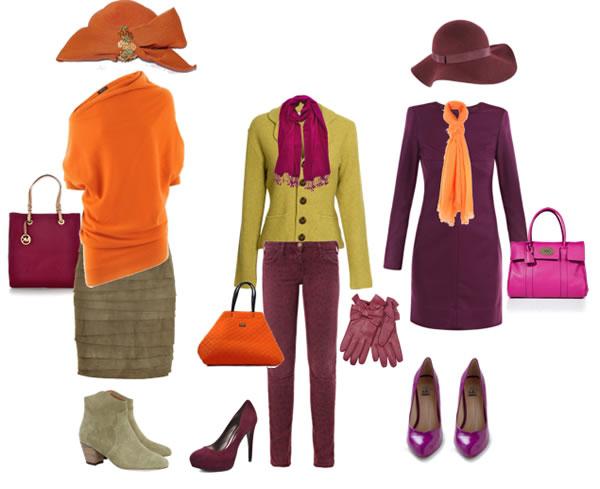The game of contrasts. How to combine contrasting colors
Coloristics is a fascinating science thatengaged in the study of colors, their combinations and effects on humans. It would seem, what kind of science is it to look at colors? However, the study of color is given great attention in various areas: interior design, web design, photography, clothing design, hairdressing art, floristry, advertising, marketing and even psychology.
What Colors Learn
To study the nature of color is not as easy as thismay seem at first glance. Connoisseurs of color can spend hours telling about what are the main, complementary and compound colors. Much will be said about the characteristics, about the mixing of colors, about contrasts, color harmony, color, color language, spectra. Continue this list is endless.
Colouristics is a very important science, becausea correctly selected combination of colors is not only pleasant for the human eye, but also powerfully influences the physiological processes and the psychological state of a person. Cleverly combining colors, you can cause the necessary associations, emotions, form a certain image.

Colors. Effects on humans
Employees of advertising agencies skillfully usesuch a function of coloring, as the formation of a certain image. Not without the help of psychologists it was revealed that the advantage of certain colors in advertising can cause a certain feeling in a person.
- So, for example, red color is identified with strong emotions, determination, danger. This color awakens desire.
- Green is both relaxing and toning. It symbolizes purity, freshness, nature, as well as a new beginning.
- Orange is the color of optimists.
- Blue - the color of stability, tranquility, minimalism.
- Black is associated with luxury and elegance. Not without reason for many luxury goods, for example for cars, watches or elite alcohol, use advertising in dark colors.
Types of color combinations
At the moment, the color scheme consists of 10 types of color combinations:
- Basic.
- Complicated.
- Compound.
- Achromatic.
- Monochromatic.
- Neutral.
- Additional.
- Related.
- Contrasting.
- Relatively-contrasting colors.
One of the most common ways to combinecolors are a game of contrasts. Even if you do not know what contrasting colors are, you have definitely encountered this phenomenon in your life. Have you noticed how red ribbons and toys look harmonious on a Christmas tree? All because the red and green colors are contrasting. So what is "contrasting colors"?

The color circle of Itten
Professionals use special informationmaterials, allowing you to determine the right combination of colors. Tables of color combination are counted in hundreds, and each of them has its own advantages. But most often people of creative orientation use the color circle of Itten.

Johannes Itten is a true expert in the field ofcoloristics. All his life he devoted to studying color. This knowledge Itten presented to the world in the form of a manual called "The Art of Color", which is a "bible" for artists, designers and all whose activities are associated with flowers and design.
In the color wheel are 12 shades of threeprimary colors: red, blue and yellow. Contrast colors are those that are sharply opposite to each other and are on opposite sides of the circle.
If you refer to the image of the circle of Itten, you can immediately see that the yellow is a contrasting pair with the violet, blue - with orange, and the contrast color red - green.
The right combination
Often contrasting combinations of colors are called complimentary. What are these combinations used for?
This combination is often used in painting,when you need something to highlight or emphasize some object of the picture. If you look around, you can see that nature is full of contrasts: scarlet flaming mushroom against the background of emerald green beckons with its colors; bright yellow sun, glowing in the blue sky; blue waves caressing the golden sandy beach.

Interior designers have long recognized thateffectively looks exactly a complimentary combination of colors. The color combination tables will help you choose a harmonious color pair, but you need to remember a few moments that will help "squeeze the maximum" out of the gamut of hues:
- Contrast colors should not be in equalproportions - this will lead to an imbalance. Optimal option - the use of one color as the main and complement it with accents of a pair of shades.
- Another way to combine contrasting pairs is to use different shades of two colors. This will ensure a balance of color.
- In order to dim the brightness of the complimentarycolors, "dilute" them with white or cream. For example, if a set of orange skirt and blue blouse looks too defiant, you can soften the image with white accessories.
- Professionals recommend using the main andcomplementing colors in certain proportions. For example, for a red-green pair, this proportion will be 1: 1, orange-blue - 1: 2, yellow-violet - 1: 3.
These rules will be useful if you take pure spectral colors. You can see them in the picture below.

How to use contrasting colors
If you are afraid of using contrasts incorrectly, then remember that muted colors are easier to use, since they are less likely to "interrupt" each other.
The main rule of combining contrasting colors: the more intense the color tone, the less should be the surface area on which it is used.
By following these rules, you can create the most harmonious image, be it clothes, bouquet, interior design or website. Otherwise, there will be disharmony, negative perception.
</ p>



